Recent Development in Modeling of Coated Spherical Contact
Abstract
1. Introduction
2. Coated Spherical Contact under Normal Loading
2.1. Elastic Regime
2.2. Yield Inception
2.3. Elastic–Plastic Regime
3. Coated Spherical Contact under Combined Normal and Tangential Loading
4. Coated Rough Surface Contact
5. Experimental Validation and Correlation
6. Bilayer/Multilayer Coated Spherical Contact
7. Conclusions
Author Contributions
Funding
Acknowledgments
Conflicts of Interest
References
- Blomberg, A.; Olsson, M.; Andersson, H.; Bratthäll, J.; Hogmark, S. Wear behaviour of uncoated and WC-C-coated alumina under closed sliding. Surf. Coat. Technol. 1992, 52, 235–241. [Google Scholar] [CrossRef]
- Grill, A. Review of the tribology of diamond-like carbon. Wear 1993, 168, 143–153. [Google Scholar] [CrossRef]
- Holmberg, K.; Matthews, A.; Ronkainen, H. Coatings tribology—Contact mechanisms and surface design. Tribol. Int. 1998, 31, 107–120. [Google Scholar] [CrossRef]
- Hogmark, S.; Jacobson, S.; Larsson, M. Design and evaluation of tribological coatings. Wear 2000, 246, 20–33. [Google Scholar] [CrossRef]
- Holmberg, K.; Ronkainen, H.; Matthews, A. Tribology of thin coatings. Ceram. Int. 2000, 26, 787–795. [Google Scholar] [CrossRef]
- Solzak, T.A.; Polycarpou, A.A. Tribology of Hard Protective Coatings Under Realistic Operating Conditions for Use in Oilless Piston-Type and Swash-Plate Compressors. Tribol. Trans. 2010, 53, 319–328. [Google Scholar] [CrossRef]
- Chang, W.R. An elastic-plastic contact model for a rough surface with an ion-plated soft metallic coating. Wear 1997, 212, 229–237. [Google Scholar] [CrossRef]
- Greenwood, J.A.; Williamson, J.B.P. Contact of nominally flat surfaces. Proc. R. Soc. Lond. Ser. A. Math. Phys. Sci. 1966, 295, 300–319. [Google Scholar]
- Bhattacharya, A.; Nix, W. Analysis of elastic and plastic deformation associated with indentation testing of thin films on substrates. Int. J. Solids Struct. 1988, 24, 1287–1298. [Google Scholar] [CrossRef]
- Korsunsky, A.; McGurk, M.; Bull, S.; Page, T. On the hardness of coated systems. Surf. Coat. Technol. 1998, 99, 171–183. [Google Scholar] [CrossRef]
- Martínez, E.; Romero, J.; Lousa, A.; Esteve, J. Nanoindentation stress–strain curves as a method for thin-film complete mechanical characterization: Application to nanometric CrN/Cr multilayer coatings. Appl. Phys. A 2003, 77, 419–426. [Google Scholar] [CrossRef]
- Chudoba, T.; Griepentrog, M.; Dück, A.; Schneider, D.; Richter, F. Young’s modulus measurements on ultra-thin coatings. J. Mater. Res. 2004, 19, 301–314. [Google Scholar] [CrossRef]
- Andersson, J.; Erck, R.; Erdemir, A. Friction of diamond-like carbon films in different atmospheres. Wear 2003, 254, 1070–1075. [Google Scholar] [CrossRef]
- Lara, L.C.; Costa, H.; De Mello, J.D.B. Influence of layer thickness on sliding wear of multifunctional tribological coatings. Ind. Lubr. Tribol. 2015, 67, 460–467. [Google Scholar] [CrossRef]
- Chatterjee, A.; Beheshti, A.; Polycarpou, A.A.; Bellon, P. Yield Maps for Single and Bilayer Thin Films Under Scratch. J. Tribol. 2016, 138, 031402. [Google Scholar] [CrossRef]
- Kolubaev, A.V.; Byeli, A.V.; Buyanovskii, I.A.; Kolubaev, E.A.; Kukareko, V.A.; Sizova, O.V.; Khrushchov, M.M. Structure, Deformation, and Fracture of Hard Coatings During Sliding Friction. Russ. Phys. J. 2019, 62, 1363–1397. [Google Scholar] [CrossRef]
- Rabinowicz, E. Friction and Wear of Materials, 2nd ed.; John Wiley & Sons, Inc.: New York, NY, USA, 1965; pp. 113–118. [Google Scholar]
- Johnson, K.L. Contact Mechanics, 1st ed.; Cambridge University Press: Cambridge, UK, 1985; pp. 90–104. [Google Scholar]
- Chang, W.R.; Etsion, I.; Bogy, D.B. An Elastic-Plastic Model for the Contact of Rough Surfaces. J. Tribol. 1987, 109, 257–263. [Google Scholar] [CrossRef]
- Brizmer, V.; Kligerman, Y.; Etsion, I. Elastic-plastic spherical contact under combined normal and tangential loading in full stick. Tribol. Lett. 2007, 25, 61–70. [Google Scholar] [CrossRef]
- Ovcharenko, A.; Halperin, G.; Etsion, I. Experimental Study of Adhesive Static Friction in a Spherical Elastic-Plastic Contact. J. Tribol. 2008, 130, 21401. [Google Scholar] [CrossRef]
- Ghaednia, H.; Wang, X.Z.; Saha, S.; Xu, Y.; Sharma, A.; Jackson, R.L. A Review of Elastic–Plastic Contact Mechanics. Appl. Mech. Rev. 2017, 69, 060804. [Google Scholar] [CrossRef]
- Keer, L.; Kim, S.; Eberhardt, A.; Vithoontien, V. Compliance of coated elastic bodies in contact. Int. J. Solids Struct. 1991, 27, 681–698. [Google Scholar] [CrossRef]
- Goltsberg, R.; Etsion, I. A universal model for the load–displacement relation in an elastic coated spherical contact. Wear 2015, 322, 126–132. [Google Scholar] [CrossRef]
- Goltsberg, R.; Etsion, I. Contact area and maximum equivalent stress in elastic spherical contact with thin hard coating. Tribol. Int. 2016, 93, 289–296. [Google Scholar] [CrossRef]
- Goltsberg, R.; Etsion, I.; Davidi, G. The onset of plastic yielding in a coated sphere compressed by a rigid flat. Wear 2011, 271, 2968–2977. [Google Scholar] [CrossRef]
- Ronen, S.; Goltsberg, R.; Etsion, I. A comparison of stick and slip contact conditions for a coated sphere compressed by a rigid flat. Friction 2017, 5, 326–338. [Google Scholar] [CrossRef]
- Goltsberg, R.; Etsion, I. A model for the weakening effect of very thin hard coatings. Wear 2013, 308, 10–16. [Google Scholar] [CrossRef]
- Jackson, R.L.; Kogut, L. A comparison of flattening and indentation approaches for contact mechanics modeling of single asperity contacts. J. Tribol. 2006, 128, 209–212. [Google Scholar] [CrossRef]
- Song, W.; Li, L.; Ovcharenko, A.; Jia, D.; Etsion, I.; Talke, F.E. Plastic yield inception of an indented coated flat and comparison with a flattened coated sphere. Tribol. Int. 2012, 53, 61–67. [Google Scholar] [CrossRef]
- Chen, Z.; Goltsberg, R.; Etsion, I. Yield modes in a coated spherical contact. Tribol. Int. 2018, 120, 309–316. [Google Scholar] [CrossRef]
- Song, W.; Li, L.; Etsion, I.; Ovcharenko, A.; Talke, F.E. Yield inception of a soft coating on a flat substrate indented by a rigid sphere. Surf. Coat. Technol. 2014, 240, 444–449. [Google Scholar] [CrossRef]
- Zhao, B.; Xu, H.Z.; Lu, X.Q.; Ma, X.; Shi, X.J.; Dong, Q.B. Contact behaviors of a power-law hardening elastic–plastic asperity with soft coating flattened by a rigid flat. Int. J. Mech. Sci. 2019, 152, 400–410. [Google Scholar] [CrossRef]
- Goltsberg, R.; Levy, S.; Kligerman, Y.; Etsion, I. Strengthening Effect of Soft Thin Coatings. J. Tribol. 2018, 140, 64501. [Google Scholar] [CrossRef]
- Eid, H.; Joshi, N.; McGRUER, N.E.; Adams, G.G. A Model of Contact with Adhesion of a Layered Elastic-Plastic Microsphere with a Rigid Flat Surface. J. Tribol. 2011, 133, 31406. [Google Scholar] [CrossRef]
- Chen, Z.; Goltsberg, R.; Etsion, I. Plasticity evolution in a coated sphere compressed by a rigid flat. Tribol. Int. 2016, 98, 116–124. [Google Scholar] [CrossRef]
- Chen, Z.; Goltsberg, R.; Etsion, I. A universal model for a frictionless elastic-plastic coated spherical normal contact with moderate to large coating thicknesses. Tribol. Int. 2017, 114, 485–493. [Google Scholar] [CrossRef]
- Lu, X.Q.; Xu, H.Z.; Zhao, B. Effect of Hardening Exponent of Power-Law Hardening Elastic-Plastic Substrate on Contact Behaviors in Coated Asperity Contact. Materials 2018, 11, 1965. [Google Scholar] [CrossRef]
- Lu, X.Q.; Huang, F.Z.; Zhao, B.; Keer, L.M. Contact Behaviors of Coated Asperity with Power-Law Hardening Elastic–Plastic Substrate During Loading and Unloading Process. Int. J. Appl. Mech. 2018, 10, 1850034. [Google Scholar] [CrossRef]
- Zait, Y.; Zolotarevsky, V.; Kligerman, Y.; Etsion, I. Multiple normal loading-unloading cycles of a spherical contact under stick contact condition. J. Tribol. 2010, 132, 41401. [Google Scholar] [CrossRef]
- Shi, X. On Slip Inception and Static Friction for Smooth Dry Contact. J. Appl. Mech. 2014, 81, 121005. [Google Scholar] [CrossRef]
- Ovcharenko, A.; Halperin, G.; Etsion, I. In situ and real-time optical investigation of junction growth in spherical elastic–plastic contact. Wear 2008, 264, 1043–1050. [Google Scholar] [CrossRef]
- Chen, Z.; Etsion, I. Model for the static friction coefficient in a full stick elastic-plastic coated spherical contact. Friction 2019, 7, 613–624. [Google Scholar] [CrossRef]
- Chen, Z. Friction Reduction Effect of Soft Coatings. J. Tribol. 2019, 141, 104501. [Google Scholar] [CrossRef]
- Zhang, H.; Chen, Z.; Etsion, I. Model for the static friction coefficient of spherical contact with soft coating. Tribol. Lett 2020. (under review). [Google Scholar]
- Bowden, F.P.; Tabor, D. The Friction and Lubrication of Solids; Oxford University Press: Oxford, UK, 1950; pp. 114–115. [Google Scholar]
- Liu, Z.; Neville, A.; Reuben, R.L. The Effect of Film Thickness on Initial Friction of Elastic-Plastically Rough Surface with a Soft Thin Metallic Film. J. Tribol. 2002, 124, 627–636. [Google Scholar] [CrossRef]
- Zolotarevskiy, V.; Kligerman, Y.; Etsion, I. Elastic–plastic spherical contact under cyclic tangential loading in pre-sliding. Wear 2011, 270, 888–894. [Google Scholar] [CrossRef]
- Chen, Z.; Etsion, I. The elastic-plastic contact behavior of rough surfaces with hard coatings. Tribol. Int. 2019, 134, 435–442. [Google Scholar] [CrossRef]
- Yeo, C.D.; Katta, R.R.; Lee, J.; Polycarpou, A.A. Effect of asperity interactions on rough surface elastic contact behavior: Hard film on soft substrate. Tribol. Int. 2010, 43, 1438–1448. [Google Scholar] [CrossRef]
- Waddad, Y.; Magnier, V.; Dufrénoy, P.; De Saxcé, G. A New Contact Model for Multilayered Solids with Rough Surfaces. Tribol. Lett. 2017, 65, 155. [Google Scholar] [CrossRef]
- Siu, J.H.; Li, L.K. An investigation of the effect of surface roughness and coating thickness on the friction and wear behaviour of a commercial MoS2–metal coating on AISI 400C steel. Wear 2000, 237, 283–287. [Google Scholar] [CrossRef]
- Singh, R.; Xie, Z.; Bendavid, A.; Martin, P.; Munroe, P.; Hoffman, M. Effect of substrate roughness on the contact damage of DLC coatings. Diam. Relat. Mater. 2008, 17, 975–979. [Google Scholar] [CrossRef]
- Gu, C.; Wang, S. On a model for the prediction of asperity interactions of the coated friction pair. Ind. Lubr. Tribol. 2019. [Google Scholar] [CrossRef]
- Greenwood, J.A.; Tripp, J.H. The contact of two nominally flat rough surfaces. Proc. Inst. Mech. Eng. 1971, 185, 625–633. [Google Scholar] [CrossRef]
- Huang, X.; Kasem, H.; Shang, H.F.; Shao, T.M.; Etsion, I. Experimental study of a potential weakening effect in spheres with thin hard coatings. Wear 2012, 296, 590–597. [Google Scholar] [CrossRef]
- Huang, X.; Etsion, I.; Shao, T. Indentation pop-in as a potential characterization of weakening effect in coating/substrate systems. Wear 2015, 338, 325–331. [Google Scholar] [CrossRef]
- Bar-Hen, M.; Etsion, I. Experimental study of the effect of coating thickness and substrate roughness on tool wear during turning. Tribol. Int. 2017, 110, 341–347. [Google Scholar] [CrossRef]
- Zhang, P.Y.; Diao, D.F.; Wang, Z.J. Three-Dimensional Local Yield Maps of Hard Coating Under Sliding Contact. J. Tribol. 2012, 134, 21301. [Google Scholar] [CrossRef]
- Cai, T.X.; Zhang, P.Y.; Diao, D.F. Evolution of Maximum Contact Stresses in Amorphous Carbon Coated Silicon During Sliding Wear Against Si3N4 Ball. J. Tribol. 2013, 135, 21401. [Google Scholar] [CrossRef]
- Wood, R.J. Tribology of thermal sprayed WC–Co coatings. Int. J. Refract. Met. Hard Mater. 2010, 28, 82–94. [Google Scholar] [CrossRef]
- Huang, X.; Etsion, I.; Shao, T. Effects of elastic modulus mismatch between coating and substrate on the friction and wear properties of TiN and TiAlN coating systems. Wear 2015, 338, 54–61. [Google Scholar] [CrossRef]
- Valefi, M.; De Rooij, M.; Mokhtari, M.; Schipper, D.J. Modelling of a thin soft layer on a self-lubricating ceramic composite. Wear 2013, 303, 178–184. [Google Scholar] [CrossRef]
- Djabella, H.; Arnell, R. Finite element analysis of contact stresses in elastic double-layer systems under normal load. Thin Solid Films 1993, 223, 98–108. [Google Scholar] [CrossRef]
- Fontalvo, G.; Daniel, R.; Mitterer, C. Interlayer thickness influence on the tribological response of bi-layer coatings. Tribol. Int. 2010, 43, 108–112. [Google Scholar] [CrossRef]
- Martínez, E.; Romero, J.; Lousa, A.; Esteve, J. Wear behavior of nanometric CrN/Cr multilayers. Surf. Coat. Technol. 2003, 163, 571–577. [Google Scholar] [CrossRef]
- Yu, C.J.; Wang, Z.J.; Wang, Q.J. Analytical frequency response functions for contact of multilayered materials. Mech. Mater. 2014, 76, 102–120. [Google Scholar] [CrossRef]
- Wang, Z.J.; Yu, C.J.; Wang, Q. An efficient method for solving three-dimensional fretting contact problems involving multilayered or functionally graded materials. Int. J. Solids Struct. 2015, 66, 46–61. [Google Scholar] [CrossRef]
- Korchevnik, O.; Goltsberg, R.; Kligerman, Y.; Etsion, I. Electrical Resistance Model of a Bilayer-Coated Spherical Contact. IEEE Trans. Compon. Packag. Manuf. Technol. 2018, 8, 1614–1620. [Google Scholar] [CrossRef]
- Parel, K.; Chen, Z.; Etsion, I. Strengthening and weakening effects in bilayer coated spherical contact. Friction 2020. (under review). [Google Scholar]
- Chen, X.W.; Yue, Z.Q. Contact mechanics of two elastic spheres reinforced by functionally graded materials (FGM) thin coatings. Eng. Anal. Bound. Elem. 2019, 109, 57–69. [Google Scholar] [CrossRef]
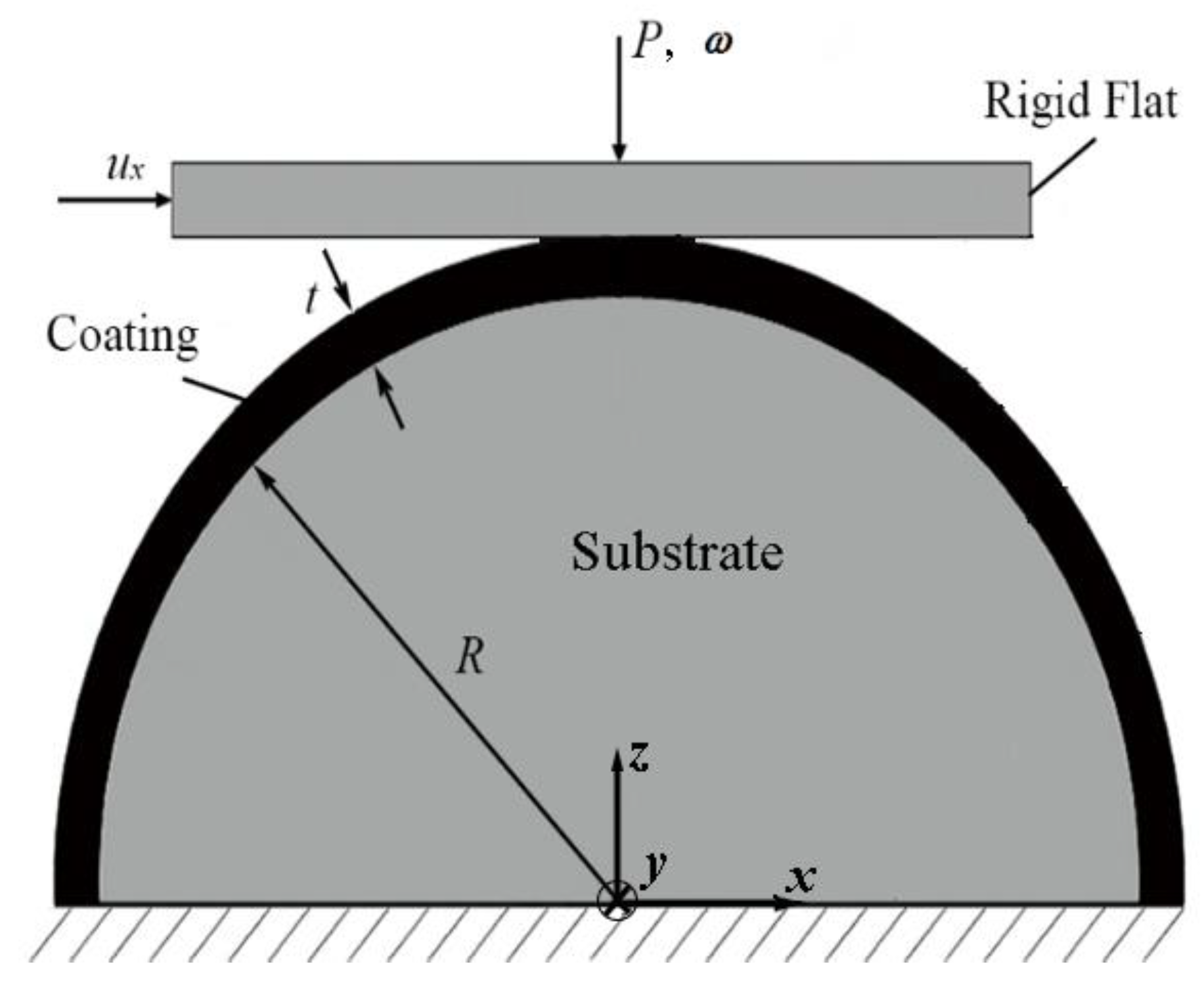
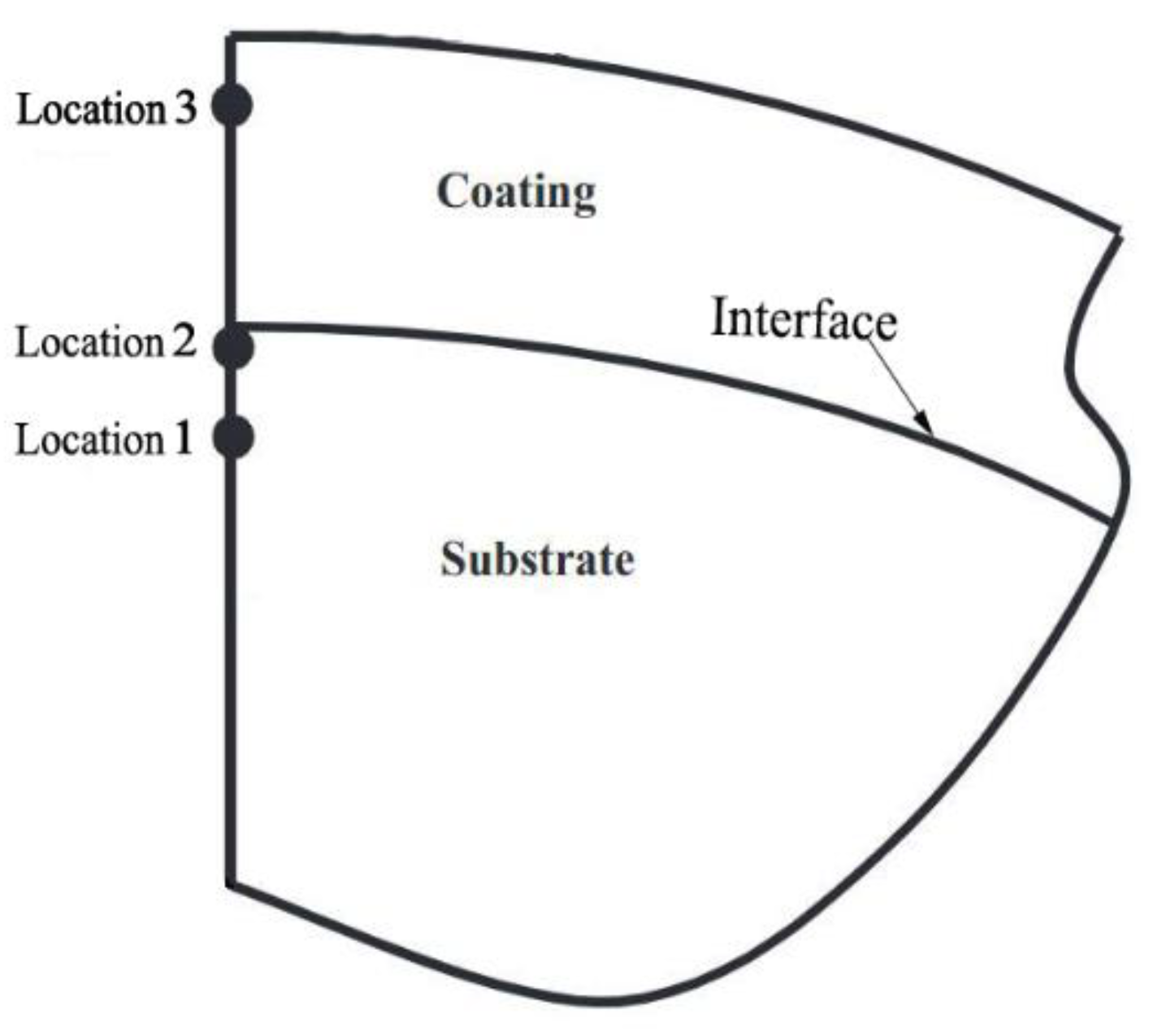



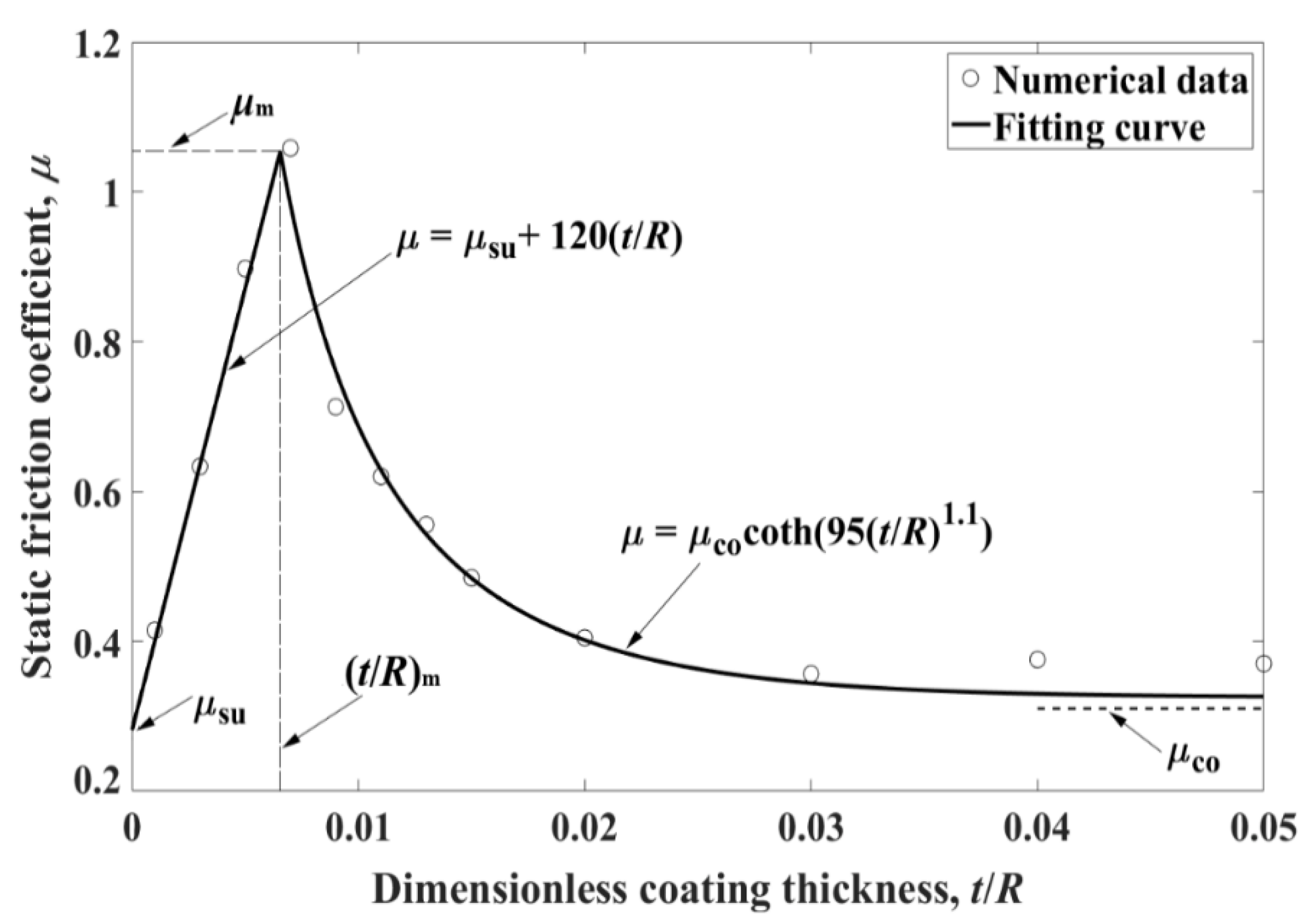

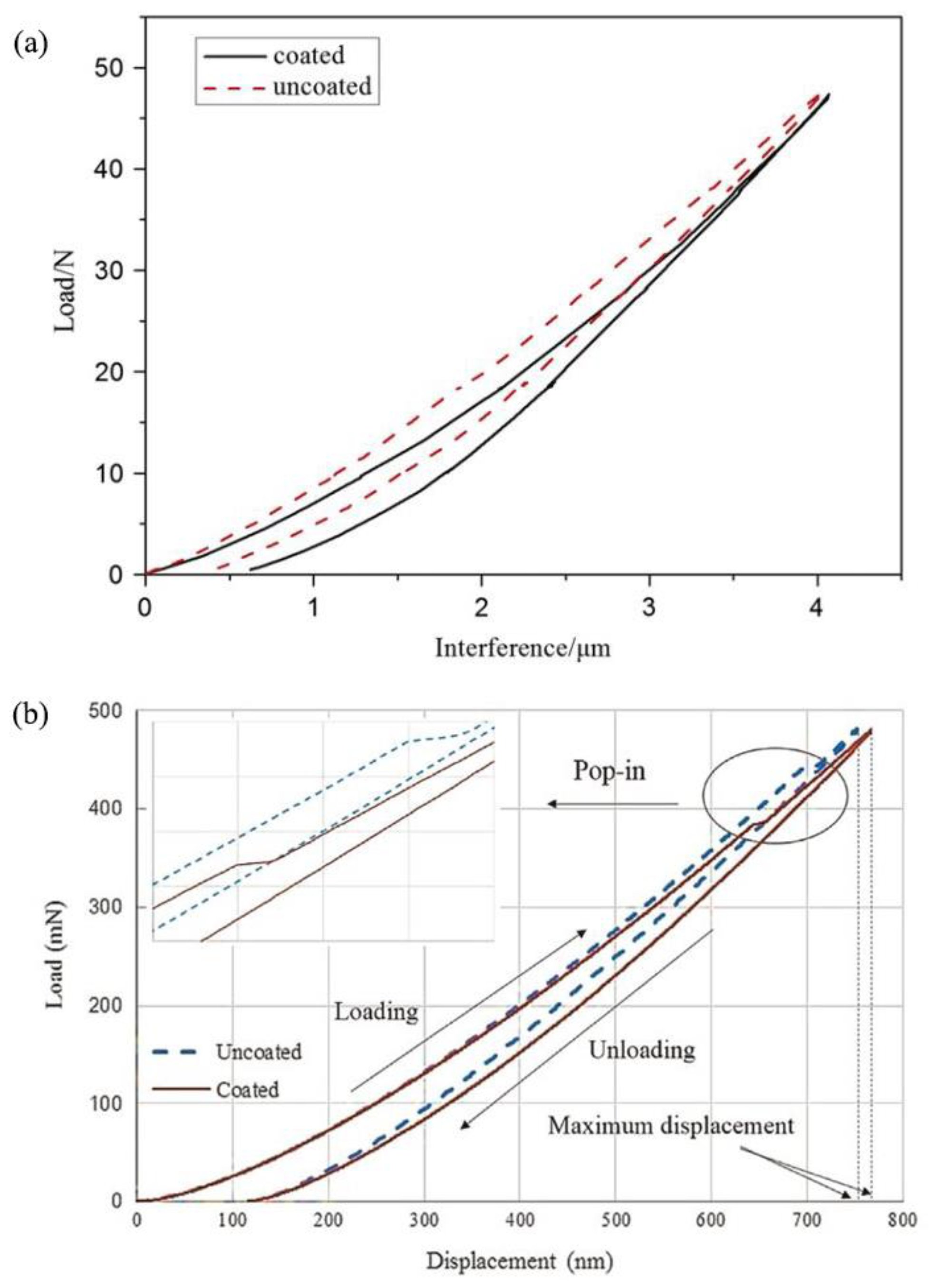
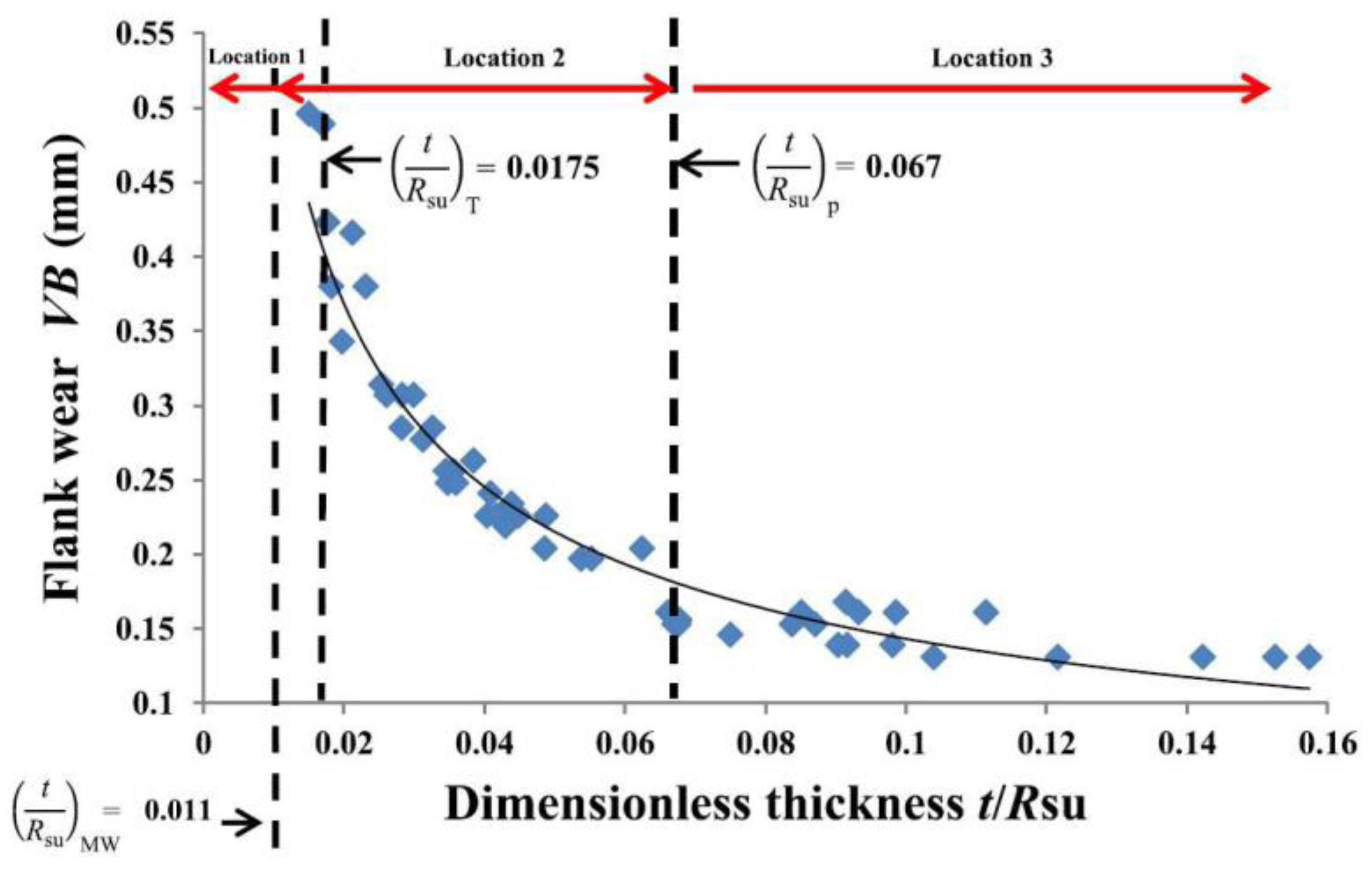
| Item | (t/R)MW | (t/R)T | (t/R)p |
|---|---|---|---|
| Physical meaning | Lowest yield resistance | Transition from weakening to strengthening effect | Highest yield resistance |
| Empirical expression |
| Yco/Ysu | (t/R)AB | (t/R)DEF | (t/R)CBE |
|---|---|---|---|
| Above Point E | (t/R)MW, lowest yield resistance | (t/R)p, highest yield resistance | Not exist |
| Below Point E | Not reported | Not reported | Not reported |
© 2020 by the authors. Licensee MDPI, Basel, Switzerland. This article is an open access article distributed under the terms and conditions of the Creative Commons Attribution (CC BY) license (http://creativecommons.org/licenses/by/4.0/).
Share and Cite
Chen, Z.; Etsion, I. Recent Development in Modeling of Coated Spherical Contact. Materials 2020, 13, 460. https://doi.org/10.3390/ma13020460
Chen Z, Etsion I. Recent Development in Modeling of Coated Spherical Contact. Materials. 2020; 13(2):460. https://doi.org/10.3390/ma13020460
Chicago/Turabian StyleChen, Zhou, and Izhak Etsion. 2020. "Recent Development in Modeling of Coated Spherical Contact" Materials 13, no. 2: 460. https://doi.org/10.3390/ma13020460
APA StyleChen, Z., & Etsion, I. (2020). Recent Development in Modeling of Coated Spherical Contact. Materials, 13(2), 460. https://doi.org/10.3390/ma13020460





